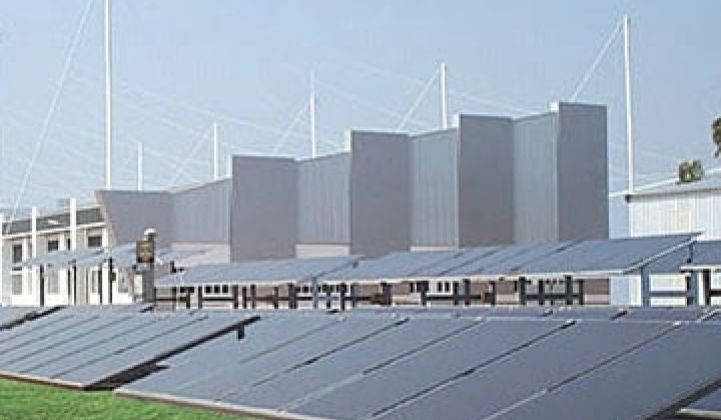Amorphous silicon solar players are in trouble. That was the assessment from Thomas Surek, a solar industry consultant and former photovoltaic program manager at the National Renewable Energy Laboratory.
Surek said the slew of startup companies buying factory equipment from Oerlikon Solar in Switzerland and Applied Materials in Santa Clara, Calif., are paying high costs to start production at a time when the costs of producing panels from competing technologies are falling quickly.
Almost 6 gigawatts of amorphous silicon panel production capacities are under construction or have been announced worldwide, he said.
"But is there a market for these products? My answer is: probably not," Surek said at the Photovoltaics Summit 2009 in San Francisco Monday.
Amorphous silicon technology emerged as a potential market-share taker when makers of common crystalline silicon panels faced a shortage of polysilicon.
The shortage began around 2005 as solar equipment makers began to compete against chip companies for the raw material. But many new and existing polysilicon producers have since opened new factories (see Polysilicon Prices Head for a Steep Fall). Pricing for polysilicon under long-term contracts could fall from $70 per kilogram in 2008 to $60 in 2012 and $52 in 2015, according to GTM Research.
The economic crisis that made it difficult for solar power plant developers to find financing has cause demand for solar energy equipment to drop, which has further depressed the prices for polysilicon as well as solar panels.
Amorphous silicon players aren't only competing with crystalline silicon panel makers. They also must beat those making other thin-film panels but are using different semiconductor materials, which are key ingredients for converting sunlight into electricity.
Commercial cadmium-telluride panels can convert more of the sunlight that hits them into electricity than amorphous silicon panels on the market today. First Solar panels have nearly 11 percent efficiency, while amorphous silicon panels fall somewhere between 6 percent to 9 percent.
Then there is the issue of production costs.
First Solar already said it could produce panels at 0.93 per watt. Amorphous silicon panel makers, on the other hand, say they could get the production costs down to $1.50 per watt in the best-case scenario, Surek said. But that production cost is close to the selling prices of First Solar's cadmium-telluride panels, which are likely going for around $1.70 to $1.80 per watt, he noted.
Many amorphous silicon companies have only begun commercial production over the past year. So it will take time for those companies to reach large-volume production and reduce manufacturing costs to stay competitive, Surek said.
Selling prices for crystalline silicon panels are around $2.25 to $2.50 per watt, Surek said.
"These companies evolved at a time when it was a seller's market. Now it's a buyer's market. You can shop around the find cheaper modules," Surek said. "Unless they have a long term vision and deep pockets, or they will have problems."
Larger players such as Sharp might do better in the amorphous silicon market because of their long experiences in manufacturing flat panel displays and hefty financial muscle, Surek said. Sharp also develops its own manufacturing technology (see Sharp Guns for U.S. Thin-Film Market).
The same problem faced by amorphous silicon solar players also could plague other thin-film technology developers, such as those making panels with copper, indium, gallium and selenium (CIGS).
"I very much doubt CIGS. I just don't see any of them having the right cost structure," he said.
Companies that are using mirrors to concentrate the sunlight onto slivers of solar cells – an approach that also sounded promising during the polysilicon shortage – faces the same challenge ("Where they are going is unclear to me," Surek said.).
It might be too early to write-off amorphous silicon players. Oerlikon recently announced that test panels from its pilot line could reach 11 percent (see Intersolar: Will Oerlikon's Silicon Rival First Solar?).
Some of the large flat-panel display makers in Taiwan also have announced plans to produce amorphous silicon panels, and their manufacturing know how could enable them to lower production costs faster than startup companies (see Taiwanese LCD Giant AUO Jumpstarts Thin-Film Solar Business).
Join experts and influencers at Greentech Media's Growth Opportunities in the New PV Market: Projects, Finance and Policy in San Francisco on July 13.




